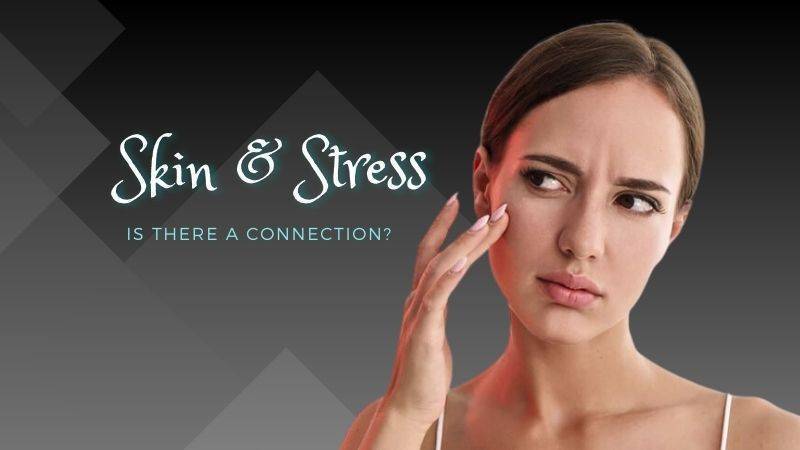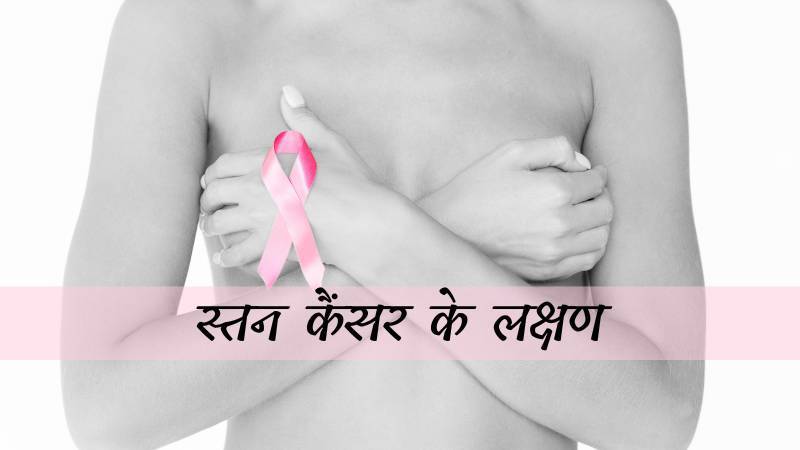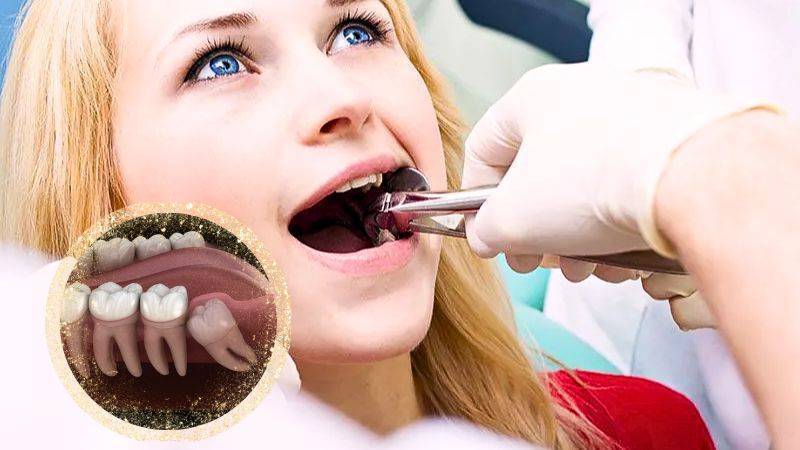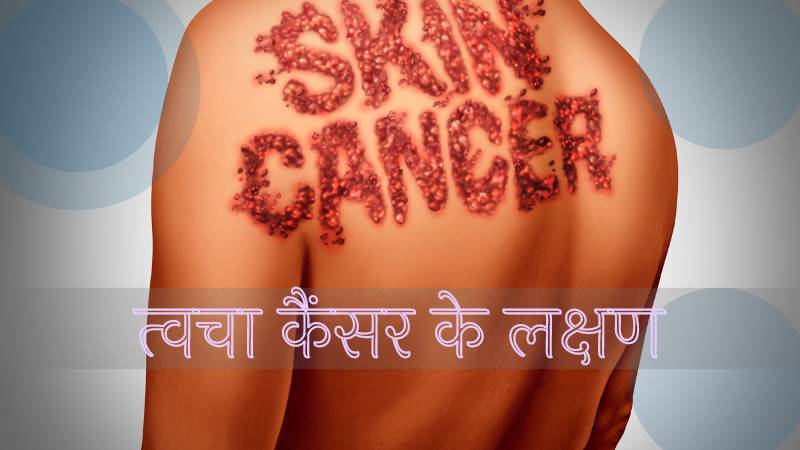Skin and Stress-Is there a connection?
Feeling exhausted, swamped, and short of time? Have you noticed under-eye shadows or puffiness? Perhaps a new skin rash, hair loss, or frequent psoriasis flares?
Pay attention to what your body is telling you. The bond between your skin and brain is potent, with stress-related skin conditions being both real and increasingly common.
Stress can indeed provoke skin problems. This is due to the complex connection between the mind and the skin, often referred to as the “brain-skin connection.”
It’s well-established that stress can worsen conditions like acne, eczema, and psoriasis through the body’s inflammatory responses.
It can lead to physiological changes causing high blood pressure, headaches, and tiredness. But it can also alter the appearance of your hair, nails, and skin.
Stress can instigate flares of psoriasis and eczema. It could be stress-induced if you’re coping with persistent adult acne. Dry skin triggered by stress is another indicator that something is not quite right beneath the surface.
The skin has a high density of nerve endings and is rich in endocrine structures that are under neuroendocrine control. As such, emotional stress can have a significant impact on skin physiology.
Fortunately, there’s plenty within your power to manage stress and associated skin conditions. Your dermatologist can propose various solutions, ranging from medical interventions and cosmetic treatments to simple self-care rituals.
The Complex Interconnection
There is a profound connection between mental health and skin wellness, which traces back to our earliest years, starting with the initial skin-to-skin contact between mothers and their infants.
Medical professionals have recognized that skin issues like acne can lead to stress and compromised mental health. However, this relationship is complex, and decoding the cause and effect is not a simple task.
“The association between stress and skin conditions is challenging to investigate in humans. It’s suggested that some skin problems worsen due to stress. But the reverse has also been proven – serious skin conditions can indeed escalate stress levels,” explains Dr. Anton Alexandroff, a consultant dermatologist and spokesperson for the British Skin Foundation.
In a recent survey conducted among patients, 90% of healthcare professionals concurred that stress could exacerbate skin issues. Meanwhile, 92% acknowledged that skin problems could also intensify mental health challenges such as stress, anxiety, and depression.
Impact of Stress on Your Skin
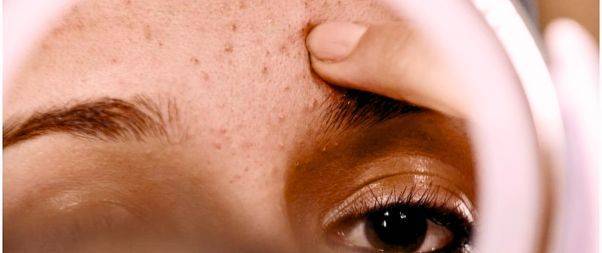
Stress, whether acute or chronic, can initiate various hormonal and chemical reactions in your body. Here’s how your body typically reacts under stress:
- Your body’s sympathetic nervous system activates, releasing hormones such as adrenaline and cortisol.
- Increased cortisol levels signal the glands in your skin to produce more oil.
- As a consequence, your skin becomes more susceptible to acne breakouts, blocked pores, and other skin complications.
- These automatic responses may lead to inflammation, weight gain, and heightened skin reactivity and sensitivity.
- Stress-induced inflammation can decelerate digestion in your gut.
- High-stress levels can disturb gut bacteria balance, potentially leading to a condition known as “leaky gut.”
- Stress affects your immune system, disrupts your sleep patterns, and can lead to unhealthy dietary choices.
- As the body perceives itself under threat, stress can provoke autoimmune disorders and inflammatory conditions such as eczema, psoriasis, and rosacea.
- Stress can induce mood disorders, anxiety, and increase nervous habits.
- You may unconsciously put out scabs or acne, scratch your skin, or bite your nails.
- Even minimal anxiety can set your body’s stress response into high gear, leading to sensations of burning or itching in the skin.
Indicators of Stress on Your Skin
 Under stressful circumstances, chronic skin conditions often become aggravated, exacerbating problems such as acne. Signs and symptoms of stress-induced skin conditions include:
Under stressful circumstances, chronic skin conditions often become aggravated, exacerbating problems such as acne. Signs and symptoms of stress-induced skin conditions include:
- Acne breakouts and skin rashes
- Sensation of burning or itching on the skin
- Flare-ups of eczema, psoriasis, and rosacea
- Hair loss or increased oiliness in hair
- Hives and red skin bumps
- Scalp issues such as dandruff, redness, and flaking
- Delayed wound healing process
- Dermatitis
- Dryness in skin, hair, and nails
- Fever blisters and cold sores
- Fine lines and wrinkles, particularly frown lines and forehead lines
- Nail problems like halted growth, brittleness, or peeling
- Bags and dark circles under the eyes
Stress often initiates a detrimental cycle. When stressed, you’re more likely to disregard self-care, lose sleep over worries, or neglect exercise and skincare routines. Even habits like skipping nighttime face cleansing or consuming alcohol can intensify skin problems.
It’s not surprising that individuals with skin conditions like psoriasis and eczema often experience heightened levels of depression, anxiety, and negative sentiments related to their skin condition.
If you’re susceptible to these conditions, you may constantly worry about your skin’s appearance or attempt to conceal rashes and plaques with clothing and makeup. This heightened vigilance for any signs of an impending flare or outbreak often leads to increased stress and self-esteem issues.
Managing the Stress of Skin Conditions
Don’t Hesitate to Seek Medical Assistance
Skin issues often carry a burden of embarrassment and stigma, primarily because they’re visibly apparent.
Establishing open communication with your doctor is the first step in combating the condition and the accompanying stress. This includes seeking medical advice for the condition itself, and also consulting a mental health professional if the weight of skin problems becomes overwhelming.
“I encourage all patients to maintain transparent communication with their doctor. It’s crucial to understand that there isn’t always an instant ‘cure,’ and alleviation of dermatological symptoms may take time. Patients should also explore mental health services. However, they may need to be patient due to service constraints and high demand,” advises Oates.
Believe in Your Loved Ones
Sharing your feelings about your skin conditions with friends and family can provide a helpful perspective.
“Discussing my feelings and experiences with acne was genuinely beneficial for me – at times, you just need someone else to help you view things more logically and remind you that you’re more than your skin,” shares Lang, a survivor.
Seek Peer Support and Charitable Organizations
Numerous online resources and support groups are available to discuss skin problems and stress. Online communities like Patient.info forums or the Talk Psoriasis Support Community are excellent platforms encouraging patients to share their journeys, enhancing each other’s well-being through connection, information exchange, and friendship.
Participating in awareness campaigns by charities like Changing Faces, which work actively to combat stigma, can also be a viable option. You can find valuable resources on the British Association of Dermatologists website and on Mind & Skin, offering up-to-date information, from podcasts to articles, guiding patients, including stress management.
Acne awareness, in particular, has seen a significant rise in recent years, with social media serving as a robust platform to amplify the message.
Instagram and YouTube host various channels dedicated to discussing acne and its associated stress. An increasing number of people are posting unfiltered images of pimples, redness, and scars to depict the reality of living with acne, along with video diaries, testimonials, and treatment advice.
Embrace Your Individuality
The most substantial improvements will come when patients recognize their value as individuals, irrespective of skin problems.
“One of my top tips is to refrain from constantly scrutinizing your face. Frequent mirror checks might only tempt you to pick at your skin and obsess over minor changes, leading to stress.
Try not to concern yourself with others’ opinions. As I’ve matured, I’ve realized that those who genuinely care about you won’t be bothered by your skin problems,” Lang concludes.
Self-Care Strategies for Stress-Induced Skin Conditions

Maintain your skincare routine, even when stressed. Keep it uncomplicated.
- Cleanse your face gently twice a day, apply a non-comedogenic moisturizer with sun protection, and don’t neglect prescribed and over-the-counter topical treatments.
- Incorporate regular exercise into your schedule. Choose an activity you enjoy, be it cycling, hiking, or online fitness classes. Gentle yoga or tai chi can also help mitigate stress, benefiting both your skin and overall well-being. Plus, the endorphins released during exercise will enhance your energy, mood, and perspective.
- Engage in regular stress management practices, including deep breathing, mindfulness, meditation, daily affirmations, and journaling.
- Pay attention to your diet. Avoid alcohol, nicotine, sweets, refined complex carbohydrates, overly processed foods, and known food allergens. Instead, consume a diverse array of fruits and vegetables, lean protein, healthy fats, and antioxidant-rich foods like avocados and berries.
- Carve out time for self-relaxation and decompression. Take a leisurely walk in the evening, enjoy a soothing oatmeal bath, read a captivating book, listen to music or an interesting podcast, or treat yourself to a massage.
- Maintain a consistent sleep schedule. Both stress and insufficient sleep can make you appear fatigued and unwell. Adequate sleep enhances mood, cognition, and improves your ability to handle daily stressors. Aim for 7-8 hours of uninterrupted sleep each night. Consider using a meditation or mindfulness app to help you relax before bed. Disconnect from social media and electronic devices an hour or two before bedtime.
- Stay hydrated. Drinking plenty of water aids in flushing out toxins from the body and keeps your skin moisturized. Avoiding alcohol and excessive caffeine can also help maintain proper hydration.
- Respect yourself and your commitments, but learn to assertively say no and set healthy boundaries. There are no extra rewards for being constantly available via email or volunteering for every carpool duty. Refrain from overcommitting or overstretching yourself, as this only fosters additional stress. Ensure you make time for at least one activity you enjoy.
- Seek out a trusted friend or therapist for conversation, particularly if your mental well-being is under strain. If you’re experiencing stress about finances, relationships, or even your chronic skin condition, it’s always beneficial to seek professional assistance. Techniques like cognitive behavioral therapy and other stress-reduction methods can prove helpful during high-stress periods.
Take Care of Yourself!
Also Read

